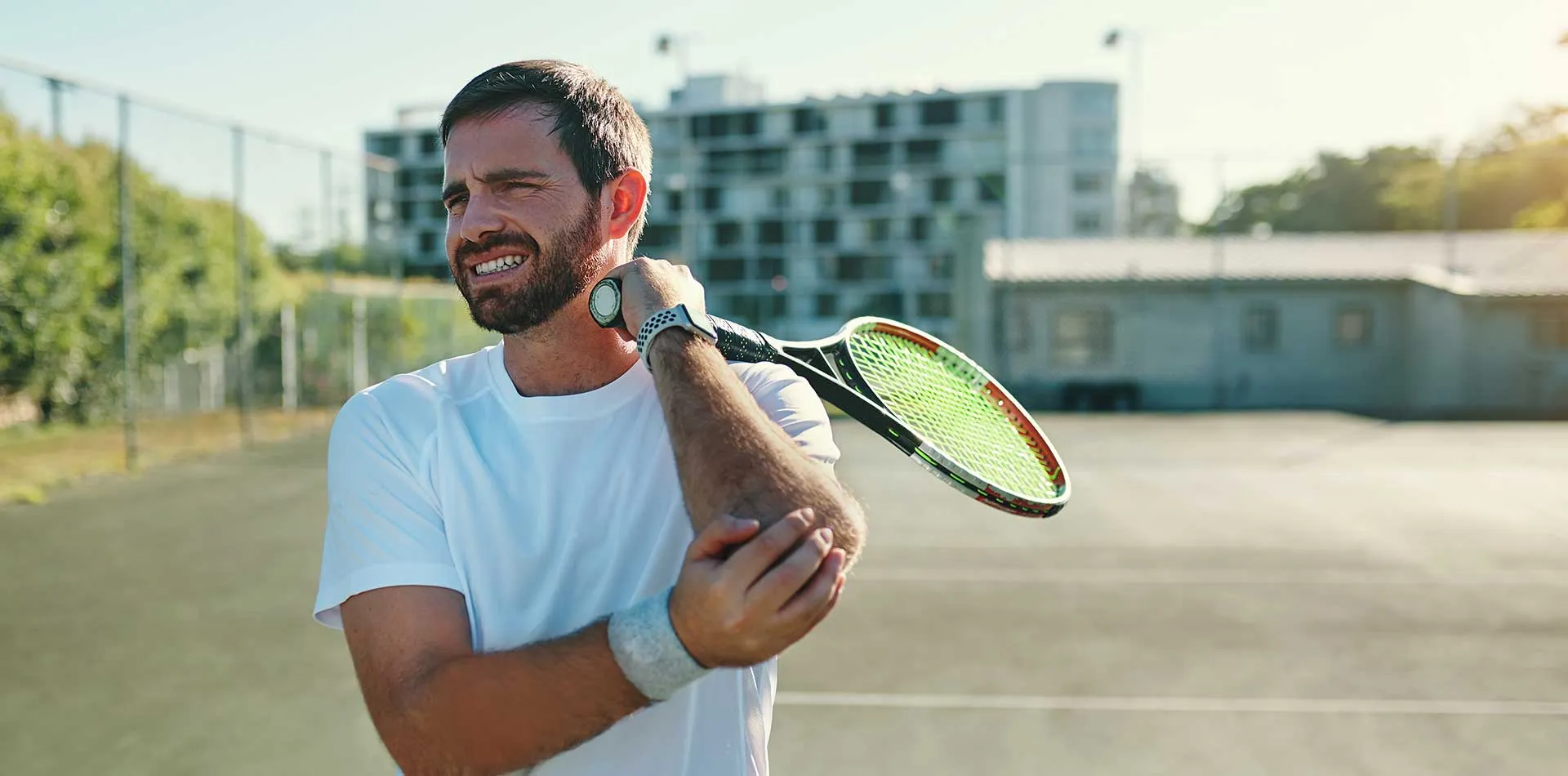
Tennis elbow is a painful state that results from overloading of tendons in the elbow caused by repeated motions of the wrist and arm.
Although athletes usually can develop tennis elbow, it is also common in plumbers, painters, carpenters and butchers.
Tennis elbow pain happens on the tendons of the forearm muscles attached to a bony bump on the outside of the elbow. The pain can also develop in the forearm and wrist.
Generally, rest and over-the-counter pain relievers can help relieve the tennis elbow. But if these don't help or if symptoms are worsening, get medical help.
Pain due to the tennis elbow can spread from the outside of the elbow into the forearm and wrist. Pain and weakness make it difficult to shake hands or grip an object, turn a doorknob, or hold a coffee cup.
Talk to the doctor when self-care measures including rest, ice and use of over-the-counter pain relievers don't work to ease the elbow pain and tenderness.
Tennis elbow is caused by excessive use, causing muscle strain injury, mainly due to repeated contractions of the forearm muscles that are worked to straighten and raise the hand and wrist. The repeated motions and stress to these tissues can lead to tiny tears in the tendons, which link the forearm muscles to the bony prominence outside the elbow.
Sports like playing tennis where repeated backhand stroke with poor technique is a most common cause of tennis elbow. The other arm motions causes of tennis elbow, including using plumbing tools, painting, driving screws, cutting up cooking ingredients, particularly meat, and repetitive computer mouse use.
The main factors that raise the risk of tennis elbow include:
• Age. Although tennis elbow affects people of all ages, it occurs mainly in adults between 30 and 50.
• Occupation. People with jobs that involve repetitive wrist and arm motions raise the chances of developing tennis elbows, such as plumbers, painters, carpenters, butchers and cooks.
• Certain sports. Playing racket sports with poor stroke technique increases the chance of tennis elbow.
These self-care measures can help prevent the worsening of a tennis elbow condition:
• Limit activities that worsen the elbow pain.
• Take over-the-counter pain relievers, like as ibuprofen (Advil, Motrin IB) or naproxen (Aleve).
• Use ice or a cold pack for 15 minutes three to four times a day.
• Ensure to use a proper technique during sports and activities that require motion and avoid repetitive wrist motions.
Patient Experience